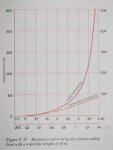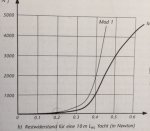Tanqueray
Well-Known Member
I have no hesitation whatever about motor sailing - to me the engine is just another propulsion option along with all the sail combination options.
With retirement our cruising has become more relaxed for sure - but even so, the knock-on effect of missing one tidal-gate can be magnified many times over on a trip from say the solent up to the Western Isles. Miss St.Cats and that can often degenerate into missing Portland, Start Pt etc. etc.
I set a 'Progress required VMG' into my passage planning - if we can sail it then great, all is perfect, but I have no hesitation in sticking the donk on if our speed drops enough to miss a vital gate.
With retirement our cruising has become more relaxed for sure - but even so, the knock-on effect of missing one tidal-gate can be magnified many times over on a trip from say the solent up to the Western Isles. Miss St.Cats and that can often degenerate into missing Portland, Start Pt etc. etc.
I set a 'Progress required VMG' into my passage planning - if we can sail it then great, all is perfect, but I have no hesitation in sticking the donk on if our speed drops enough to miss a vital gate.


